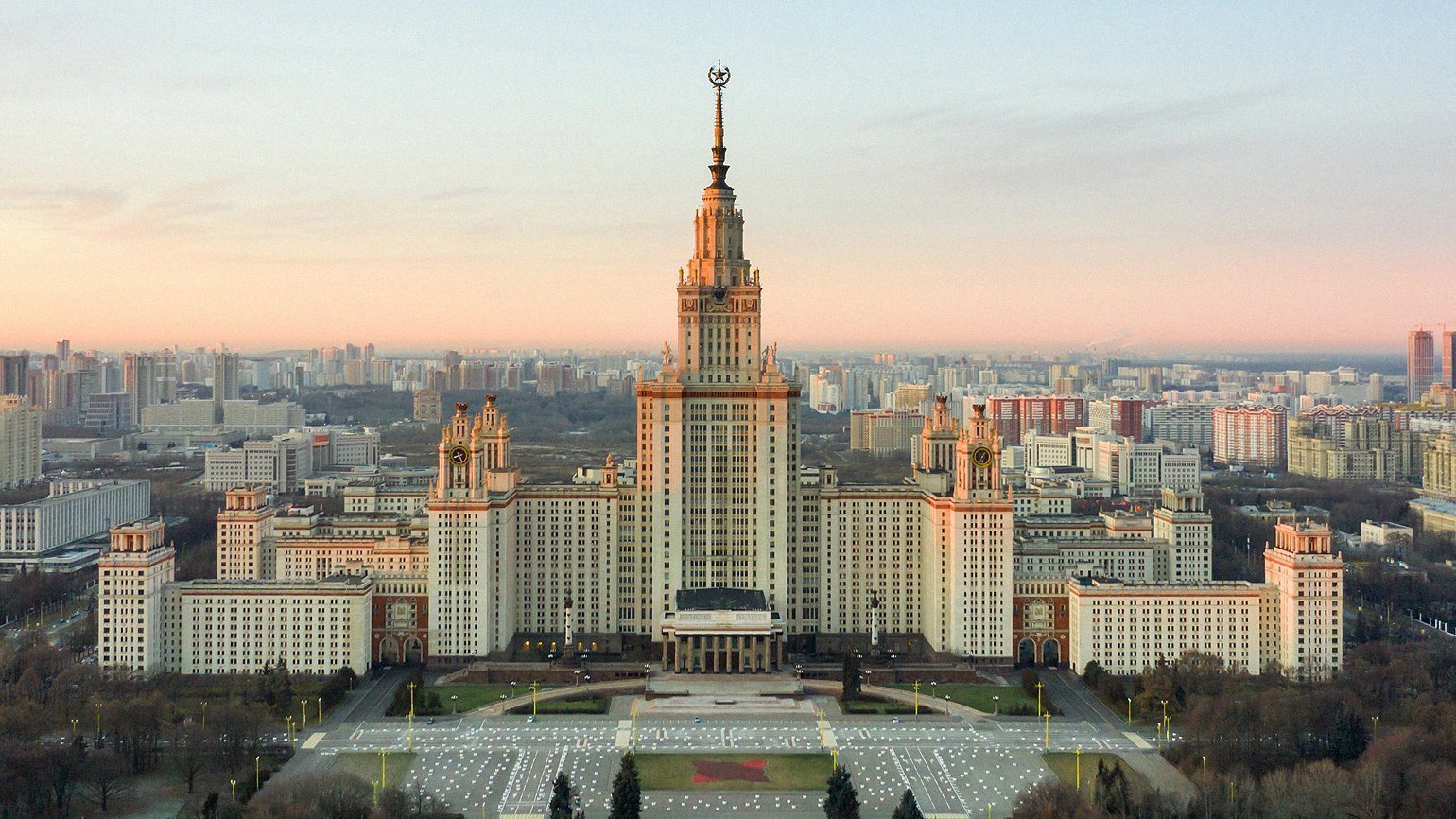Out now: qs world university rankings by subject 2021
Содержание:
- Employer reputation
- What are the big changes since last year’s rankings?
- Top Universities in Europe
- Особые рейтинги
- What do the best universities have in common?
- QS-2022: +16 к представленности
- Academic reputation
- Top Universities in Asia
- Top Universities in the US and Canada
- Available programs
- International faculty and international students
- Technische Universität München
- Внутрироссийские рейтинги
- How are the subject rankings calculated?
- В-третьих: ну и что всё это значит?
- Citations per faculty
- Faculty: student ratio
Employer reputation
This indicator functions in much the same way as academic reputation, only it’s based on the opinions of some of the top employers around the world. Looking at this indicator in isolation, we can see which universities you should want to be able to list at the top of your CV.
Only six have managed a perfect score of 100 this year, five of which also scored 100 with academics. The sixth, CentraleSupélec, is ranked 139th in the world and is only the fourth best university in France. This poor overall performance is the result of poor academic reputation, suggesting the newly-founded institution (it was established in 2015) is still yet to earn notice for its research and teaching.
What are the big changes since last year’s rankings?
Consistently high standards at the world’s top universities mean that there aren’t many changes towards the top of this year’s subject rankings. However, there are plenty of interesting trends in each region of the world which you might want to consider when choosing a university.
In Asia, Chinese universities now have a record number of top-50 positions across the entire subject rankings, while two subjects are topped by universities from Singapore. However, Japanese universities continue to decline in performance, partly due to decades of underfunding for research and PhD students.
Australian universities have also under-performed compared to last year, with the lowest number of university programs ranked in the top 10 for three years.
Elsewhere, there’s good news for Russian universities which now have a record number of top-20 appearances. And no university around the world is included in the top 50 for a subject more than the University of Toronto in Canada.
Top Universities in Europe

Europe claims a total of 492 schools in this year’s QS World University Rankings.
The majority of these are found in Western Europe, which counts 251 universities including the highest ranked European school, the UK’s University of Oxford, ranking second globally.
Eastern Europe has 134 schools in the index. Most of these are in Russia, including the highest ranked school in Eastern Europe, Lomonosov Moscow State University ranking 78th. Southern Europe claims 81 institutions, led by Italy’s in 142nd place.
Scandinavia is home to 26 ranked universities this year, led by Denmark’s University of Copenhagen in joint 79th.
Master’s in Legal Theory student, Jim Onyemenam, attends the global top 10 UK school, UCL. He said: “UCL is a very international university and I met people from all over the world which really broadened my perspective on life. I also developed my hobbies and passions a lot more through the student societies which made my experience well-rounded.”
Особые рейтинги
Есть узкие тематические рейтинги, как международные, так и российские, которые оценивают вузы не по образованию, а по другим, особым показателям. Мы не будем тут перечислять все — назовём несколько для примера. Среди них тоже есть заметные и влиятельные. Например, в Webometrics оценивают присутствие вузов в интернете, прозрачность их сайтов и открытость на других ресурсах.
Лейденский рейтинг и Nature Index Ranking строятся исключительно на данных о научных публикациях учёных университета.
Ещё одна категория систем ранжирования — интернет-порталы, где вузы оцениваются по разным параметрам, но не выстраиваются в общую линию по сумме баллов. Например, европейская система U-Multirank: в ней можно сравнить вузы из разных стран в целом и в разрезе дисциплин, но нельзя увидеть, к примеру, на сколько мест Гарвард опережает МГУ. Под определение рейтинга этот формат не подпадает.
Рейтинг рекрутинговой платформы hh.ru составляется не на основании академических показателей (вроде успеваемости студентов или исследовательской работы), а на основе критерия успешности выпускников на рынке труда, и его результаты часто заметно расходятся с рейтингами академическими. Но в этом списке ранжируют не все российские, а лишь московские вузы.
Материал дополняется результатами новых рейтингов.
What do the best universities have in common?
Jack Moran, QS spokesperson for the subject rankings, identifies three factors that are shared by this year’s best-performing universities:
«First, an international outlook – both in terms of faculty body and research relationships – correlates strongly with improved performance.
«Second, rising universities have received strong targeted investment from governments over a decade or more – particularly in China, Russia, and Singapore.
«Third, improving relationships with industry is correlated with better employment, research, and innovation outcomes.”
Obviously, this doesn’t mean that every top university benefits from these three factors — or that lower-ranked universities have none of them — but this observation hopefully provides useful context for why some universities have improved this year.
QS-2022: +16 к представленности
Главный рейтинг компании Quacquarelli Symonds — глобальный список лучших вузов QS World University Rankings. В отличие от предметных подборок, он считается институциональным, то есть оценивает вузы по всем сторонам их деятельности. Институциональный рейтинг QS, несмотря на критику, по престижу и охвату сопоставим только с двумя другими мировыми списками — это World University Rankings 2020 издания Times Higher Education и старейший Шанхайский рейтинг (Академический рейтинг университетов мира, ARWU).
Он датируется будущим годом, и только что опубликованный список называется QS World University Rankings 2022. В него вошли 48 российских вузов — на 16 больше, чем год назад. По представленности в рейтинге Россия теперь на четвёртом месте — впереди США с 177 университетами, Великобритания (90) и Китай (58).
В сотню лучших, правда, как и год назад, прошёл только Московский государственный университет, но он переместился с 74-й на 78-ю позицию.
Всего в списке 1 300 университетов. Лидерство традиционно удерживают американские и британские вузы: на первом месте Массачусетский технологический институт (США), на втором — Оксфордский университет (Великобритания), на третьем — Гарвардский университет (США).
В рейтинг этого года 16 российских вузов попали в первый раз. Теперь все университеты, участвовавшие в «Проекте 5-100», вошли в него полным составом. Из них раньше в рейтинге не появлялись Балтийский федеральный университет им. Иммануила Канта, Сеченовский университет (теперь оба в диапазоне мест 651–700) и Тюменский государственный университет (801–1 000).
Другие новички мирового рейтинга QS:
- в диапазоне мест с 701-го по 750-е — Уфимский государственный авиационный технический университет;
- на местах с 801-го по 1000-е — Финансовый университет при Правительстве РФ, Казанский национальный исследовательский технологический университет, Российский химико-технологический университет им. Д. И. Менделеева;
- с 1 001-го по 1 200-е — Иркутский государственный университет, Российский государственный педагогический университет им. А. И. Герцена, Белгородский государственный национальный исследовательский университет;
- после 1201-го места — Донской государственный технический университет, МИРЭА — Российский технологический университет, Московский городской педагогический университет, Московский педагогический государственный университет, Национальный исследовательский университет «МЭИ», Российский государственный аграрный университет (МСХА им. К.А.Тимирязева).
Academic reputation
Eight universities have all scored a perfect 100 for academic reputation in this year’s ranking, a measure of how the institution is perceived by other academics. Five of these are listed in the overall top 10 above (MIT, Stanford, Harvard, Oxford and Cambridge) but the other three are worth focusing on briefly.
The University of Tokyo is up one place to joint 22nd this year and continues to be the top university in Japan. Only three other institutions from Asia are ranked above Tokyo this year, cementing its reputation as one of the best places to attend university in the continent.
Our other two faultless universities with academics are not only both based in the US, they’re both based in California. The University of California, Berkeley (UCB) and the University of California, Los Angeles (UCLA) have both fallen in overall rank this year but continue to enjoy a healthy academic reputation, having also scored 100 for this indicator last year.
Top Universities in Asia

305 Asian schools are found in the QS World University Rankings this year.
The highest ranked university is found in Singapore in Southeast Asia: the National University of Singapore (NUS), placing in 11th place worldwide and earning its highest score in the academic reputation indicator.
Southeast Asia claims a total of 60 universities this year. Malaysia has the most ranked schools in Southeast Asia with 22; followed by Indonesia with 16.
Most of Asia’s universities are in East Asia, where 179 universities can be found. Mainland China’s performs the best, ranking in 17th.
South Asia claims 52 schools and is dominated by Indian institutions. Of these, India’s Indian Institute of Technology Bombay (IITB) earns the highest score, in joint 177th globally.
Lastly, Central Asia has 14 entries. Its highest ranked university is Kazakhstan’s in 175th.
Top Universities in the US and Canada

204 of the schools featured in this year’s QS World University Rankings are in the US and Canada.
The US claims 177 of these universities, including 19 new entries this year — the most of any country featured in the index. As mentioned above, MIT takes the top spot in the US for the 10th year running – an incredible achievement.
MIT Provost Marty Shmidt said: “MIT is a truly interdisciplinary, collaborative, thought-provoking place that encourages experimentation and pushes you to expand your mind. I think it’s a wonderful place to call home.”
Meanwhile, Canada boasts 28 ranked universities, including Canada’s top school, the University of Toronto, ranking in 26th place.
Ksenia Meteleva recently graduated from the University of Toronto and will be starting her postgraduate studies in the Autumn term.
She said: “U of T supported me in many ways through a variety of experiential learning opportunities, insightful courses, inspiring activities of student-run organizations, diverse communities and a dynamic residential life experience; all of which ultimately helped me to master the skills and competences I possess today.
“I really enjoyed my experience at UofT as an undergraduate student and I am happy to be transitioning to graduate school here.”
Available programs
St. Petersburg School of Social Sciences and Area Studies
(6)
Political Science and World Politics
Sociology and Social Informatics
St. Petersburg School of Economics and Management
(6)
International Business and Management Studies
World Economy and International Affairs
(6)
HSE University and Kyung Hee University Double Degree Programme in Economics and Politics in Asia
HSE University and University of London Parallel Degree Programme in International Relations
Computer Science
(6)
HSE University and University of London Double Degree Programme in Data Science and Business Analytics
Graduate School of Business
(6)
HSE University and University of London Parallel Degree Programme in Management and Digital Innovation
International College of Economics and Finance
(6)
HSE University and University of London Double Degree Programme in Economics
Law
(21)
Law of International Trade, Finance and Economic Integration
St. Petersburg School of Social Sciences and Area Studies
(21)
Business and Politics in Modern Asia
Comparative Politics of Eurasia
Data Analytics for Politics and Society (St. Petersburg)
World Economy and International Affairs
(21)
Socioeconomic and Political Development of Modern Asia
Master of International Business
Economics, Politics and Business in Asia
Informatics, Mathematics and Computer Science
(21)
Mathematics (Nizhny Novgorod)
Computer Vision
International Laboratory for Applied Network Research
(21)
Applied Statistics with Network Analysis
Master of Data and Network Analytics
Mathematics
(21)
Mathematics (Moscow)
Management
(21)
Global Business
Social Sciences
(21)
Politics, Economics & Philosophy
Comparative Social Research
Applied Social Psychology
St. Petersburg School of Economics and Management
(21)
Management and Analytics for Business
Finance
Arts and Culture Management
International Business
Public Policy
(21)
Political Analysis and Public Policy
Graduate School of Business
(21)
Business Analytics and Big Data Systems
International Management
Vichnevsky Institute of Demography
(21)
Population and Development
Institute for Statistical Studies and Economics of Knowledge
(21)
Governance of Science, Technology and Innovation
Communications, Media and Design
(21)
International News Production
Critical Media Studies
Institute of Cognitive Neuroscience
(21)
Cognitive Sciences and Technologies: From Neuron to Cognition
Computer Science
(21)
System and Software Engineering
Math of Machine Learning
Data Science
Master of Data Science
International College of Economics and Finance
(21)
Financial Economics
Economic Sciences
(21)
Economics and Economic Policy
Strategic Corporate Finance
Master of Business Analytics
Humanities
(21)
Linguistic Theory and Language Description
Applied Linguistics and Text Analytics
School of Arts and Humanities
(21)
Global and Regional History
Institute of Education
(21)
Science of Learning and Assessment
International faculty and international students
These two indicators both measure how international a university is, something which we consider to be an important factor, particularly for anyone looking to study abroad.
Around 50 universities achieved a perfect score for at least one of these indicators, suggesting there are plenty of places where international students will feel more than welcome. There’s a fantastic level of international diversity at universities all over the world, from the United Arab Emirates to Australia, France and even Saudi Arabia.
Interestingly, only 10 universities achieved a perfect score in both of these indicators and none of these are from the US. The UK is represented three times, by Imperial College London, the London School of Economics and Political Science (LSE) and SOAS, University of London. Clearly – despite anxieties about Brexit – London remains thoroughly open to international students.
Technische Universität München

Last but definitely not least, Technische Universität München places first once again amongst the top German universities. The university climbs five places this year to rank 50th in the world overall and 17th for employer reputation.
Technische Universität München was founded in 1968 and aims to combine top class facilities for cutting edge research with its unique learning opportunities for students, striving to create lasting value for society.
The remaining top German universities in the top 20 are:
11. Georg-August-Universität Göttingen- ranked 195thin the world.
12. Universität Hamburg- ranked joint 228th in the world.
13. Rheinische Friedrich-Wilhelms-Universität Bonn– ranked joint 240th in the world.
14. Technische Universität Darmstadt– ranked joint 267th in the world.
15. Universität Köln– ranked joint 282nd in the world.
16. Universität Mannheim – ranked 307th in the world, up 24 places.
17. Universität Frankfurt am Main– ranked joint 311thin the world.
18. Universität Erlangen-Nürnberg– ranked joint 317th in the world.
19. Universität Jena– ranked joint 323rd in the world, up 17 places.
And the rest…
20. Universität Stuttgart– ranked joint 333rd in the world.
21. Universität Ulm– ranked joint 344th in the world.
22. Westfälische Wilhelms-Universität Münster– ranked 356th in the world.
23. Johannes Gutenberg Universität Mainz – ranked joint 403rd in the world.
24. Julius-Maximilians-Universität Würzburg – ranked joint 437th
25. Ruhr-Universität Bochum– ranked joint 439th in the world.
26. Universität Konstanz – ranked joint 443rd in the world.
27. Universität des Saarlandes– ranked joint 451st in the world.
28. Martin-Luther-Universität Halle-Wittenberg– ranked joint 470th in the world.
29. Universität Leipzig– ranked joint 483rd in the world.
After the global top 500, the remaining universities are ranked in ranges, starting at 501-510 and continuing to 801-1000.
30. Christian-Albrechts-Universität zu Kiel– ranked 501-510 in the world.
31. Universität Bayreuth – ranked 521-530 in the world.
32. Justus-Liebig-Universität Gießen– ranked 531-540 in the world.
33. Universität Bremen– ranked 541-550 in the world.
34. Technische Universität Braunschweig– ranked 551-560 in the world.
35. Universität Regensburg– ranked 601-650 in the world.
=36. Leibniz Universität Hannover – ranked 651-700 in the world.
=36. Philipps-Universität Marburg – ranked 651-700 in the world.
=36. Universität Hohenheim – ranked 651-700 in the world.
39. Universität Rostock-ranked 701-750 in the world
=40. Universität Duisburg-Essen – ranked 751-800 in the world.
=40. Universität Düsseldorf -ranked 751-800 in the world.
=42. Technische Universität Dortmund – ranked 801-1000 in the world.
=42. Universität Bielefeld -ranked 801-1000 in the world.
=42. Universität Potsdam – ranked 801-1000 the world.
Внутрироссийские рейтинги
В этих списках ранжируются только отечественные вузы, без сравнения с иностранными.
Национальный рейтинг университетов от «Интерфакса»
Кто выпускает. Группа «Интерфакс» публикует рейтинг с 2009 года.
В чём фишка. Оценивается социальная среда в университете и его бренд. Балл вуза в сводном рейтинге «Интерфакса» — сумма оценок за образование, исследования, бренд, международную деятельность, социальную среду и инновации.
Кто лидирует. Список всегда возглавляет МГУ, и остальные места в топ-20 тоже довольно стабильны. Например, тройка лидеров в 2021 году не изменилась по сравнению с 2020-м: МГУ, МИФИ, МФТИ.
RAEX-100
Кто выпускает. Рейтинговое агентство RAEX ежегодно публикует список ста лучших вузов России с 2012 года.
В чём фишка. Здесь фокус на образование. Группа критериев «Условия для получения качественного образования» весит половину совокупного балла вуза в рейтинге RAEX. Это довольно разнообразные признаки — в том числе классические для рейтингов вузов показатели соотношения числа преподавателей и студентов и доли иностранных студентов, а также число очников, победы в олимпиадах, стоимость обучения. Всего в группе 15 показателей.
Кто лидирует. Первая двадцатка вузов, как и у «Интерфакса», незначительно меняется год от года. В тройке те же МГУ, МФТИ, МИФИ. Они же, плюс МГТУ им. Н. Э. Баумана и СПбГУ, занимают ведущие позиции в списках лучших вузов в естественно-научной и технической сферах по версии RAEX. МГУ также возглавил рейтинг вузов по влиятельности и половину предметных списков — эти рейтинги RAEX впервые выпустило в прошлом году.

Фото: Mikhail Starodubov / Shutterstock
Лучшие российские вузы по версии Forbes
Кто выпускает. Российская редакция Forbes с 2018 года.
В чём фишка. В оценке учитывается так называемый фактор Forbes. Баллы по нему получают университеты, где учились или учатся дети 200 богатейших бизнесменов России и победители рейтинга «30 до 30». По замыслу составителей, это помогает определить, выпускники каких вузов имеют шансы войти в число богатейших людей страны или в российскую политическую элиту.
How are the subject rankings calculated?
Every university included in this year’s rankings is assessed based on four indicators: its reputation among academics, its reputation among global employers, the number of research citations the university achieves per paper in that subject, and something called ‘H-index’, which measures the productivity and impact of each published scientist or scholar at a university. More information about each of these can be found in our methodology.
This combination of indicators allows us to measure how each university is regarded externally and the quality of academic activity that occurs within that university. The universities that perform the best across all four indicators will be the ones which feature towards the top of each individual subject ranking.
However, if you’re particularly interested in which universities performed well for just one of the indicators — employer reputation, for example — you can use the rankings tables to sort the results by that particular indicator.
В-третьих: ну и что всё это значит?
Университеты из России вошли уже в первые предметные и отраслевые рейтинги QS в 2011 году, но их позиции росли медленно. Например, в 2013 году в топ-100 по отдельным дисциплинам входил только МГУ. Сейчас в первую сотню предметных рейтингов прошли 16 вузов. Это действительно рекорд, и важную роль в таком результате сыграл проект повышения конкурентоспособности российских университетов «5-100», который совсем недавно попал под лавину критики.
Как заявил ректор ВШЭ Ярослав Кузьминов на брифинге по результатам предметного рейтинга QS, можно считать, что проект выполнил поставленную правительством задачу.
Но изначально вхождение в предметные рейтинги не было целью Проекта 5-100. В президентском указе 2012 года говорилось, что к 2020 году не менее пяти российских университетов должны войти в первую сотню ведущих мировых университетов. В первую сотню вообще, то есть в институциональных рейтингах.
Этой цели не добился ни один из 21 вуза-участника Проекта 5-100. В первые сотни мировых рейтингов QS и ARWU вошёл только МГУ, который не получал поддержки по этой госпрограмме.
Стоит ли результат усилий
Предметные рейтинги, конечно, выглядят помельче, чем институциональные, но тоже важны. В своих дисциплинах они играют роль рекламной витрины для абитуриентов и учёных, которых хотели бы привлечь вузы. По идее, участие в рейтингах помогает университетам продвинуться в тех самых направлениях, по которым их и оценивают, — то есть привлечь зарубежных студентов и талантливых сотрудников, повысить качество образования и исследований.
Недавняя проверка Счётной палаты показала, что как минимум часть из этих эффектов российские университеты от своего активного участия в мировых рейтингах получили. Участники Проекта 5-100 стали публиковать больше научных статей в престижных международных журналах, активнее позиционировать себя за рубежом, привлекать лучших абитуриентов и иностранных учёных.
Эта международная активность и повлияла на продвижение в рейтингах по отдельным дисциплинам.
Каких результатов российских вузов в рейтингах ждать дальше
Общие затраты бюджета на Проект 5-100 составили порядка 80 млрд рублей. И похоже, власти невысоко оценивают эффективность вложений в международное продвижение вузов.
В новой российской программе академического превосходства «Приоритет 2030», как рассказал министр науки и высшего образования Валерий Фальков, роль рейтингов будет пересмотрена. Вузы обяжут работать больше над внутренними изменениями, чем над продвижением в мировые топ-100. Утвердить новую программу должны в ближайшее время.
Есть вероятность, что в эпоху «Приоритета 2030» российские вузы станут уделять меньше внимания международным рейтингам, сосредоточившись на другом, и высокие позиции этого года будут потеряны. К такому развитию событий может привести и принятие законопроекта о просветительской деятельности, если он обяжет вузы получать специальное разрешение Минобрнауки для международного сотрудничества.
Citations per faculty
A measure of the quantity of research being produced by a university, citations per faculty allows institutions with a strong analytical focus to shine.
Of the five universities to score a perfect 100 this year, only Caltech is a recognizable name from our overall top 10. Princeton University and the Georgia Institute of Technology (Georgia Tech) are also based in the US, while the other two universities are from India and South Korea.
The Indian Institute of Science (IISc) Bangalore has dropped 14 places overall this year to 184th but continues to enjoy a strong research output. It performs best in the QS World University Rankings by Subject for chemical engineering and materials science, suggesting those two areas are likely to be the focus of much of the institute’s leading research.
The Gwangju Institute of Science and Technology (GIST) has also underperformed this year overall, falling seven places to joint 322nd. It also performs well in our subject rankings for materials science, so anyone interested in this subject area has two intriguing, more obscure universities which they may want to consider applying to.
Faculty: student ratio
A whopping 20 universities achieved a perfect score for their ratio of faculty members to students this year, showing more institutions are recognizing the benefits of small class sizes and personal contact with tutors. Only 19 universities managed this feat in last year’s ranking.
A wide range of universities are among the 20 this year, with Japan, Italy, France, Russia and Denmark all represented. While five of the institutions achieved an overall finish in the top 10, others are far more obscure. Wake Forest University in the United States is the lowest-ranked university to score 100 for its faculty to student ratio, having dropped 11 places to joint 398th.

